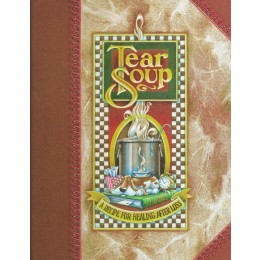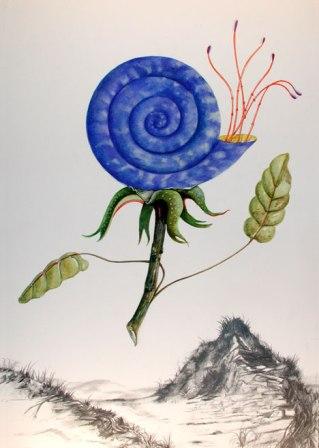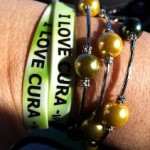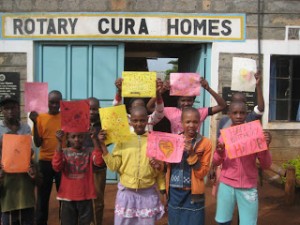New Year 2013
“An old day passes, a new day arrives. The important thing is to make it meaningful.
-Dalai Lama
New Year’s Eve Reflection
With Gratitude…
Healing Hamlet thanks those who have generously agreed to be interviewed and share their work with this website. We appreciate all who have taken a moment to view our posts and for the many encouraging comments!
Tear Soup
A Book from Grief Watch
Brought to us by Grief Watch, a bereavement resource, Tear Soup is a recipe for people of all ages who are traversing through grief. Written by Pat Schwiebert and Chuck DeKlyen, and illustrated by Taylor Bills, this book is “better than a casserole” for those who have suffered loss.
Donate a copy of Tear Soup to Sandy Hook Elementary School and the Newtown, CT community. Details Here
Winter Solstice
David Faulkner
Written for the English bagpipes by David Faulkner. Recorded by Paul Saunders and Chris Neen at Blue Moon Studios in Banbury with Dave Pegg on bass and PJ Wright on electric guitar. Produced by Dave Pegg.
Nautilusitum
Artist Vico Fabbris
Italian painter Vico Fabbris has created a beautiful and imaginative series of watercolors inspired by extinct plant life. As a young boy, Vico’s family was destitute after his father died of lung disease and all three children were sent to boarding schools. For the next several years he wore the same pair of donated shoes and rarely saw his mother. Vico Fabbris work has appeared in several shows and has earned worldwide recognition.
Learn more about Vico Fabbis here.
There is Nothing but Mystery
“I realized it for the first time in my life: there is nothing but mystery in the world, how it hides behind the fabric of our poor, browbeat days, shining brightly, and we don’t even know it.”
-Sue Monk Kidd, The Secret Life of Bees
For Another Day
The Living End
“If we only have our rights for another day If we only have our hearts for another day And if we only have our rights for another day Then we will have our time again On another day we will win the fight And step into the light Only fail when we don’t try So we will stand up when we believe There’s no limit to what we can achieve Every moment here is a moment to be seized”Submitted by Laura Adams
Now We Are Six
When I was One, I had just begun.
When I was Two, I was nearly new.
When I was Three I was hardly me.
When I was Four, I was not much more.
When I was Five, I was just alive.
But now I am Six, I’m as clever as clever,
So I think I’ll be six now for ever and ever.
-A. A. Milne, Now We Are Six
This Post is dedicated to the Victims of the Sandy Hook Tragedy
Writer Hayden Bixby
“So many of us are pulled in so many different directions, and I know that I have to compartmentalize the things on my plate in order to get everything done. Writing allows me to consider the various elements and find ways to unify them. That process is calming and reassuring.”
Hayden Bixby is a writer, teacher, mother of two teenaged daughters and step-mom to two more. She received her BA in English and Third World Studies at Pitzer College in Southern California and her MA in English at Western Washington University. A tenured faculty member of Edmonds Community College in Washington, Hayden writes articles for the Huffington Post and maintains a blog for the Cura Orphanage in Kenya. She also finds time to volunteer in her children’s schools and on the board of the local public radio station, KSER.
Hayden, thank you for joining Healing Hamlet! One of the defining aspects of your life and as a writer has been your connection to the people of Cura Village in Kenya. Can you tell us how you became involved in this part of the world?
After high school, I went to UC Santa Barbara but quickly realized I didn’t want to be there, so I applied for a study abroad program in Kenya. I hadn’t really traveled before, but the program was the only one besides England that didn’t require me to speak another language, and I thought Europe sounded a little too safe. I opted for Kenya, and it’s one of the best uninformed decisions I’ve ever made.
The University of Nairobi experienced some rioting when I was there, so President Moi shut it down — which was another stroke of luck for me, since that gave me the chance to do a lot of traveling and volunteer work in various parts of Kenya. I was a teacher’s aide at a secondary school on an island off the coast; I hitchhiked and camped throughout East Africa; and I lived for a time with a local family in the land that makes up the Maasai Mara. I met people who would affect the whole course of my life. I joined a relief project and safari from Nairobi down to the refugee camps on the border of Mozambique and Malawi. We piled into two vehicles for an overland trip that culminated in the donation of one vehicle to Save the Children, the building of two wells, and the purchase of supplies for a newly-built children’s hospital. We were basically teenagers, and it was a huge adventure.
You write and maintain The Cura Village Blog in support of the Cura Orphanage in Kenya. Tell us about the orphanage, how it started and your role in it.
Some of the friends I traveled with to the refugee camps in 1990 were Dan Eldon and his sister, Amy. At her wedding in 2006, Amy and her husband asked their guests to donate to a project her family had begun in a village outside of Nairobi: Cura Orphanage. I made a donation, but when I asked for more details about the project, I knew immediately that I had to be involved in a more concrete way. The village had suffered a major loss as a result of AIDS. A large portion of the adult population had died, leaving children to the care of extended families in households that were already living in poverty. Building the Home was the start of a commitment to helping the community get back on its feet and regain the self-sufficiency that AIDS and other factors had disrupted. I was inspired!
I didn’t have a lot of extra funds to dedicate to charitable projects, but I knew I could contribute in other ways. I immediately began developing a sponsorship program to support the Home. I worked with a friend to create the website (and eventually the blog) and devised systems for volunteers and donors to contribute to this project which was quickly becoming a big part of my life.
What are your ties to the Creative Visions Foundation? What can you tell us about its mission and inspiration, Dan Eldon?
Cura Orphanage is sponsored by the Creative Visions Foundation, an organization that fosters the work of what they call “Creative Activists”: young people who want to make a difference in the world but who may not be well-connected or established enough to have all the resources they need. Young people a lot like we were when we did our refugee camp safari! The mission of CFV is inspired by the life of Dan Eldon, who during his life time raised awareness and brought positive change to Africa.
Three years after we travelled together, Dan was killed in Somalia in 1993, when he was working as a Reuter’s photographer covering the international peace keeping effort there. On the day Dan was set to leave, the US had bombed a building where it believed a warlord was holing up. Instead, the building turned out to be filled with innocent civilians. When Dan and others went to photograph the damage, the angry mob turned on them, and Dan was beaten to death. Everyone who knew him was gutted by the news of his death. The loss was exponentially worse for his sister and parents, but they have all responded to this tragedy in loving and thoughtful ways. Dan’s dad, Mike, started a leadership training center called the DEPOT (the Dan Eldon Place of Tomorrow) in Nairobi, and Dan’s mother and sister, Kathy and Amy, started the Creative Visions Foundation, based in Malibu, CA.
The writing you do for Cura Village has the purpose of bringing healing to children whose families were destroyed by AIDS. Do you find the act of writing on behalf of these children healing for yourself?
I don’t know that I would have called it healing until you mentioned it, but I do think it helps me integrate the various elements of my life. I write about the work I do in Africa, of course, but I also reflect on motherhood, politics, culture… and I’m noticing that the pieces I write often allow me to synthesize my various interests. I notice that in a single post I might mention something about my children and about something I’ve read or a cultural event I’ve attended and about something related to one of my jobs, volunteer or otherwise. So many of us are pulled in so many different directions, and I know that I have to compartmentalize the things on my plate in order to get everything done. Writing allows me to consider the various elements and find ways to unify them. That process is calming and reassuring.
More recently you were asked to contribute articles to the Huffington Post. How has this writing experience differed from that of writing for your blog?
I started the Cura Village blog mostly to create a place for donors and other well-wishers to stay connected to our work, but now I’m enjoying the benefit of the record it keeps of the various accomplishments my colleagues and I have achieved together. I started writing for the Huffington Post for related reasons: the opportunity came to me as a result of my work at the Orphanage and my affiliation with Creative Visions Foundation. The initial invitation was to write about soft topics related to motherhood or other “good news” that would supplement the hard news on the site. Since the Huffington Post provides such a large platform, I have to imagine my audience very differently than when I write for the Cura blog. The Cura blog is public, of course, but I’m confident that anyone who reads it is already inclined to be interested in what’s there. I also allow myself to be very brief and let images (photos, videos) tell the story on the Cura blog; anyone who wants to know what’s up in Cura is more interested in seeing the kids’ faces than reading my words, anyway!
My Huffington Post blogs, however, can’t presume an existing interest in what I have to say. Most of the time, I have no idea who’s reading the posts, except when a friend sends me a note on Facebook or something. I know people are reading them because I get comments and emails from all over the country, but when I hit “submit” on an individual post, I’m not sure who my readers will be. It’s disconcerting, in a way, but it’s also exciting. The writing process is its own pleasure, and getting feedback from strangers is a bonus!
You are also an English teacher. Are there times where you’ve witnessed healing through writing in the classroom and with your students?
Absolutely! One of the best things about teaching at the community college level is that our open admission policy encourages people from all backgrounds to pursue higher education. When students have an opportunity to tell their stories in personal essays or to use their family histories to connect to a work of literature, they share incredible parts of themselves as they process what they think and feel about their life experiences. Traditional college-aged students have their stories to tell, of course, but I especially love having older students in my classes because their experiences are so rich. Veterans offer insight into contemporary politics, retirees offer historical perspective on social issues, immigrants inspire others as they achieve second and third degrees in a second language. Bringing all of this diversity through writing into the classroom discussion is not only healing for the writers, but also for the readers.
What writers do you most admire?
I admire my friend Jeffrey Gettleman, who won a Pulitzer Prize this year for his coverage of East Africa for the New York Times. He’s knowledgeable and has a keen eye for detail, but he’s also warm and has a great sense of humor that occasionally peeks out in his coverage of even the most dire topics. I also admire my partner, Greg Van Belle, who is the real writer of the family and who keeps up several blogs and writes a column for a running magazine, among other projects. His writing feels conversational and natural, and he connects with his audiences in ways I hope I do. Of course, I love to read, so asking me to choose favorite authors is tough! I always gravitate to anything Sandra Tsing Lo, who writes for The Atlantic, since I identify with her edgy self-assessments of her successes and failures as a mother and an academic and a woman. Right now I’m reading Barbarian Nurseries by Hector Tobar, which I am loving.
Where would you love to see yourself in ten years?
Greg and I would like to have a small place in the Seattle area, preferably on a marina right next to our little sailboat. I’d like to spend large portions of my year in Kenya, but still be headquartered here, near my brothers’ families. I would love to be retired from the college by then, though that may be financially impossible, so it’s a good thing I still really enjoy teaching! Depending on where my children will be living, I’d like to spend a lot more time traveling than I do now, maybe even visiting them in places where the sun shines more often than it does here. Writing might be “healing,” but hot weather is even better!
Hayden, thank you for sharing your story and for continuing to bring your insights, warmth and wisdom to your students and readers!
Keep up with Hayden at the Huffington Post and on the Cura Orphanage Website and Blog. She can by contacted at hayden@curaorphanage.org.










